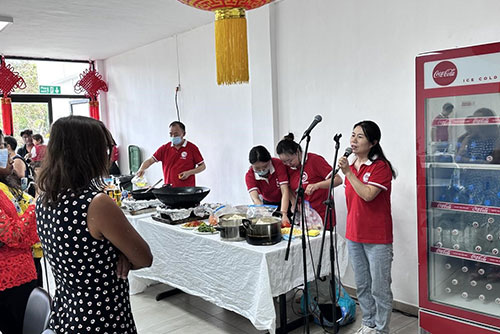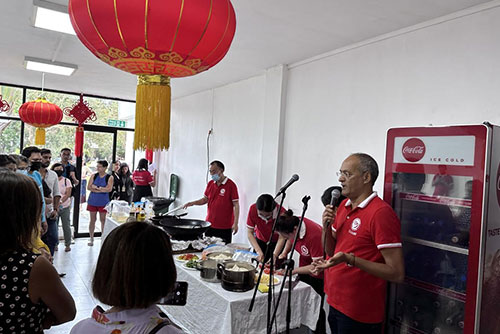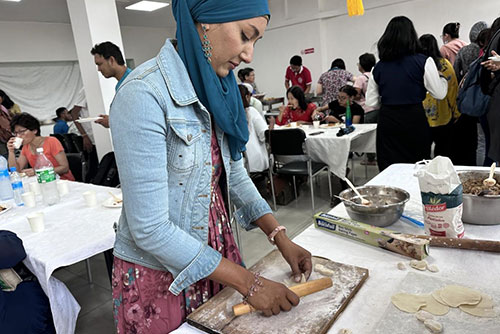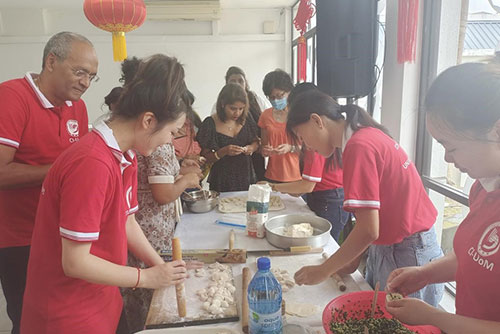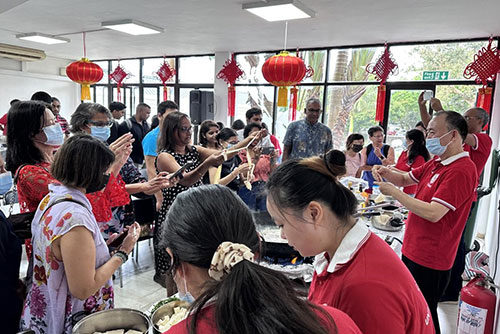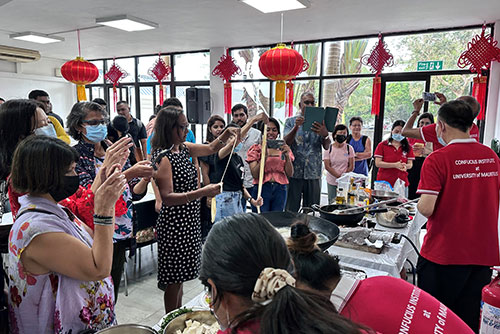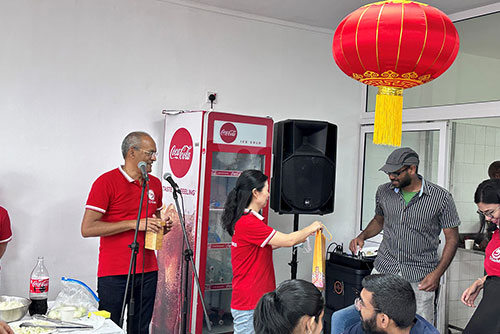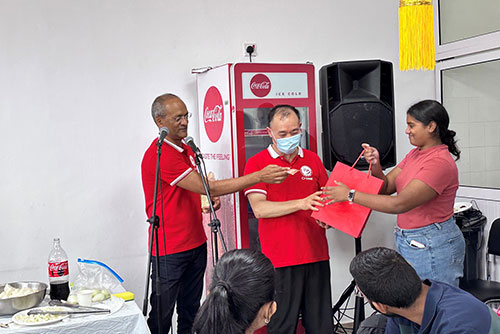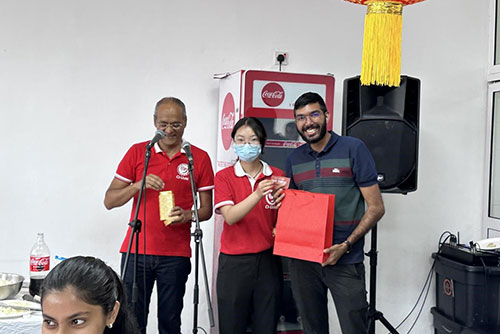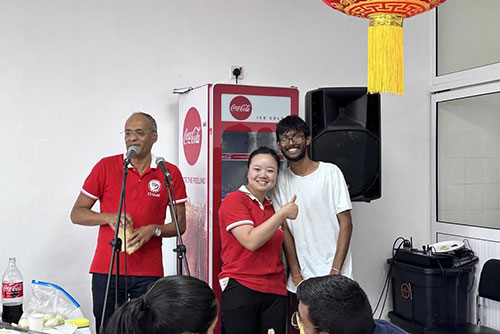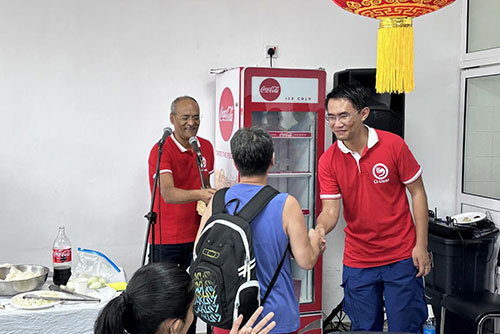The Chinese Culinary & Food Tasting Experience was hosted by the Confucius Institute at the University of Mauritius in the Staff Cafeteria of the University of Mauritius on December 10th 2022. Students and teachers of the Confucius Institute, as well as members of the general public, gathered for the event. It was an opportunity for everyone to learn about different types of Chinese cuisine through observing, cooking and tasting of Chinese food. Everyone greatly enjoyed the moment, they actively participated and tried to learn. Together with the teachers of the Confucius Institute, they experienced a cooking workshop full of "Chinese taste".
Dr. Kistamah and Professor Fu Mingduan, respectively the Mauritian and Chinese director, welcomed the participants to the ‘Chinese Culinary & Food Tasting Experience’. They talked about the richness of Chinese cuisine and wished everyone a unique Chinese food experience.
Jiaozi, also known as dumplings, are made with flour and are a traditional dish of the Han people. Originating from ancient China, Jiaozi, formerly known as "Jiao’er", has a history of more than 1,800 years. Invented during the Eastern Han Dynasty, by Zhang Zhongjing, a native of Nieyang (now Dengzhou County, Nanyang City, Henan Province), it was originally used as medicine. Dumplings now are deeply loved by the Chinese people. In northern China, dumplings are regarded as staple food, regional snack, and is also cooked for the Chinese New Year. It consists of a dough wrapper with stuffing inside and is often boiled in water. The teachers of the Confucius Institute gave a live demonstration on how to knead the dough, roll the wrapper, and fold the dumplings. Step by step, they carefully showed the students and encouraged them to do it with their own hands. One after another, everyone was eager to participate, and created many original dumpling shapes.
Hand-pulling of noodles is a very famous noodle making method in northern China. It requires skilled hands, exquisite strength, and a certain degree of fine movements. Such a novel way of making noodles quickly attracted the attention of local students. Professor Zhang demonstrated the steps and techniques of pulling noodles. Everyone was eager to try and practice the art of pulling noodles.
The Confucius Institute prepared an assortment of Chinese dishes, such as Spicy Chicken, Fried Dough Sticks, Hot and Sour Potato Strips, Tofu with Sichuan Peppers, Tomato & Egg Noodles, Mutton and Turnip Dumplings, Chinese Chives and Egg Dumplings, Fried Peanuts, etc. All the participants lined up to taste each dish, and spoke highly of the Chinese flavor. In addition, the Confucius Institute also ordered ‘Briani’ or ‘Biryani’ for everyone. Biryani is a popular ‘Asian rice dish which includes meat (chicken, lamb, or beef), a mixture of whole spices, mint leaves, coriander leaves, fried onions, and yogurt. These ingredients are combined with meat, marinated for at least half a day, and then cooked with rice, fried onions, and coriander leaves. The meat and spices will eventually flavor the rice, giving it a fabulous aroma and taste.’ It was the first time for the new Mandarin teachers from China to taste authentic Mauritian cuisine, and it also reflected the perfect combination of Chinese and Mauritian cuisine one would find in Mauritius.
A lucky draw marked the end of the event in high spirit. The Confucius Institute prepared five gift bags for those who came to participate in the Chinese Culinary & Food Tasting Experience. The Chinese and Mauritian directors as well as the teachers of the Confucius Institute presented the gifts to the lucky winners, and the Chinese Culinary & Food Tasting Experience came to a perfect end.

